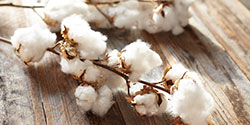Peek into the Past: How Christmas has Changed Throughout the Decades

It’s the most wonderful time of the year when families come together to delight in time-honored traditions. Decorated trees, cheerful ornaments and classic holiday songs are just some of the things we look forward to during the Christmas season. But, how have these celebrations changed over time? Join us as we take a peek into how holiday decor and traditions have evolved over the past 100 years.
Early 1900s
In the early 1900s, Christmas started becoming a widely celebrated holiday in the United States. Recent immigrants from countries like Germany and Poland brought along their European Christmas traditions when they moved to America. As they celebrated, more people learned about the new citizens’ captivating ways to celebrate the holiday. They started buying Christmas trees and sending out Christmas cards to their loved ones, and these celebrations started spreading quickly after World War I. The economy grew after the war, and more people shopped at department stores – where they saw glimmering ornaments and festive decor that set the mood for the winter season. Around this time, families also started giving gifts and enjoying holiday trips to see their loved ones.
During the Great Depression, people had to make the most out of what they had. Parents put surprise treats in their kids’ stockings. Kids usually got fruits such as oranges or bananas, which weren’t as easy to come by. The economy grew again as Americans went back to work and the U.S. entered World War II. During this time, it became even easier for people to obtain beloved Christmas decor, including sets of ornaments and tinsel. Families still enjoyed spending time together, gathering around their radios to hear Glenn Miller and other musicians play Christmas carols while exchanging gifts and eating hearty meals.
The Postwar Era
After the end of World War II, American servicemen and women arrived home with celebratory happiness an optimistic eye towards the future. This influenced the joyful Christmas spirit we know and love today. Families could now buy boxes of decorations, including large collections of machine-made ornaments. The holiday also became bigger and brighter as families adorned their trees and homes with glimmering Christmas lights and yard decorations.
Did you have a faux tree when you were growing up? These soft, snowy trees made their debut in the 1960s and provided plenty of opportunities for colorful decorating. Many families chose new colors of fresh flocked trees each year and hung matching ornaments to create themes that brought a futuristic touch to the holiday. The 1960s and 1970s were also a time when toys referencing pop culture became must-have gifts for kids. During these decades, families made cherished memories watching their favorite actors and cartoon characters host Christmas specials on TV.
Christmas in the Digital Age
Technology has also had a big impact on the way we celebrate Christmas. Home video in the 1980s and cable TV in the 90s meant we could watch our favorite Christmas movies from childhood whenever we wanted and share them easily with new generations. Musicians started composing special Christmas albums that are still favorites you might have on your MP3 player today.
Our taste in decor has changed a bit too with a whole rainbow of color palettes taking their place alongside the red, green and gold favorites. If you love the idea of a classic Christmas, there are so many ways to enjoy your decor with modern designs, too. Mixing vintage elements from Christmas history, such as bright glass ornaments, with newer technology, like lustrous LED string lights, can be the perfect way to celebrate all the traditions that have shaped this beloved winter holiday.


